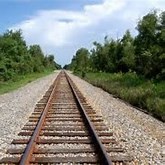Lately Steel fibers are now being used to enhance mechanical properties of all type of concrete and extensively used in UHPC. The product use is further being explored in a wider area and the research is on. This blog provides a general view of the SFRC
Fiber Reinforced Concrete
Topics Covered
General
Abbreviations Used
Fibbers
Composites
A Brief History
Fibber Reinforced Concrete
Fibbers in Concrete
Steel Fibber Types
Effects of Fibbers in Concrete
Developments in SFRC
Glued Fibbers
Applications of SFRC
Fiber vs. Fibre
There is no difference in meaning between fiber and fibre. Fiber is the preferred spelling in American English, and fibre is preferred in all the other main varieties of English
General
Steel Fiber reinforced concrete (SFRC) is now being used is stabilizing the surfaces in underground works and on hydro power projects, Road infrastructure works and in repair and maintenance of concrete structures. Lately Steel fibers are now being used to enhance mechanical properties of all type of concrete and extensively used in UHPC. The product use is further being explored in a wider area and the research is on. This blog provides a general view of the SFRC
Abbreviations
NSC Normal Strength Concrete
HSC High Strength Concrete
SCC Self Compacting Concrete
UHPC Ultra High-Performance Concrete (Ultra High-performance Fiber
Reinforced Concrete)
RCC Reinforced Cement Concrete
FRC Fiber Reinforced concrete
SFRC Steel Fiber Reinforced Concrete
ASTM American Society for Testing and Materials
EN European
ECC Engineered Cementitious Composite
Fibers
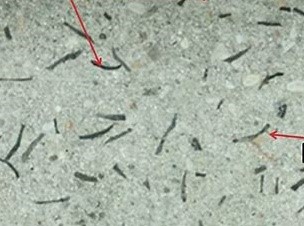
Fibers are being used for about last 30 years, to resist the shrinkage and temperature stresses created in concrete, which is quasi ductile and weak in tension.
Out of glass, poly fibers and steel fibers, the steel fibers are most successful to resist such stresses in concrete and helpful in providing ductility and durability to concrete .
A fiber is a particle having more length in comparison to its thickness. The length to thickness ratio is called aspect ratio. The fibers may be continuous and discontinuous. Discontinuous fibers can be dispersed randomly in comparison to non-discontinuous fibers.
Composites
The properties of fibers specially the tensile strength, when used in a composite, enhances the behavior of the composites. Fiber reinforced concrete is a composite.
The composite has two parts:
– the matrix and
– the reinforcement,
Matrix may be concrete (NSC- HSC-SCC-UHPC), plastic or other materials
Reinforcement (as in RCC) may include natural and manufactured fibers (steel, glass, synthetic) that provide tensile strength and other properties.

Fibers are in use in construction works since long. Mud Phuska (mud + straw) was used in mud plasters, mud bricks and mud layers laid in floors and roofs of houses. Mud is composed of loam, silt, mud, straw (cow dung also) and water. The Mud Phuska , so prepared was molded in forms of the sizes of bricks and on drying, these bricks were used in construction of wall like structures in houses. The formed such bricks were stamped also by the manufactures.

Mud mortar with fibers was used as binder for mud bricks and in plastering and flooring. The tensile stresses in the structure so produced, were countered, and controlled by the resistive force of the straw. In underdeveloped and developing countries, use of mud with straw is still in practice.

This concept was later introduced in other binding materials such as concrete, which is widely used material for construction with low tensile strength. Plain Concrete has several constituents and is called composite. Other additions to plain concrete are rebars and fibers. Reinforced concrete with steel reinforcement is commonly in use everywhere , but to improvise the ductility and tensile strength of concrete , fibers are used in it. Use of fibers reduces temperature and shrinkage stresses and also reduces the tension steel requirement sometimes. These fibers may be made of steel, glass, or polymeric synthetic fibers or even natural fibers.

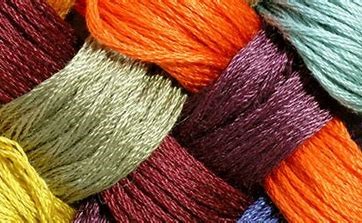
Fiber-reinforced concrete (FRC)
FRC is a composite that contains fibrous material as discussed above. The workability and hardened properties of the concrete gets better. The characteristics of FRC depends on the type of material of fibers, strength, shape and size of the fibers and their dispersion in the matrix.
This blog shall cover the Steel Fiber Reinforced Concrete (SFRC). Thin artificial fibers have less impurities (good quality output in manufacturing process as compared to other thick structural members) and are stronger and are preferred in construction. The natural fibers exist in purest form in varying properties.
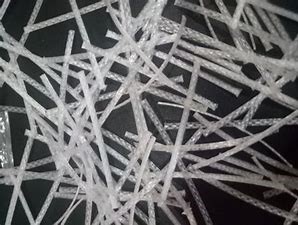
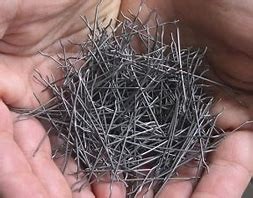
Fibers in Concrete
Fibers in concrete do not act in uncracked concrete. At the start of crack development process, when crack develops, the tensile stress of the fibers is used to stop cracking. So, the fibers provide post cracking strength or residual strength. The residual strength of the fibers depends on physical properties (such as shape, length, thickness) and chemical properties ( such as types of material ) and the dispersion of the fibers in the concrete or concrete composite.
The post cracking behavior of FRC is assessed and applied to design application for ground rested slabs or for structures subjected to bending.
(Reference ASTM C 1609/1609 M-Flexural test)
The designer should suggest the specifications after laboratory testing and suggest the type of fibers and its physical and chemical properties and the flexural test and compressive strength values to be achieved. Quality control on mix operation is important to have proper dispersion of the fibers in concrete mass.
The steel fibers conforming to ASTM C 1116/ 1116 M (Type 1) and as per manufacturer’s instructions may be used.
The polymeric fibers may be used as per manufacturer’s recommendation but conforming to ASTM C 1116/1119M (Type 3)
Furthermore, information can be obtained by the following standards:
EN 14889-1:2006 Fibers for Concrete. Steel Fibers. Definitions, specifications & conformity
EN 14889-2:2006 Fibers for Concrete. Polymer Fibers. Definitions, specifications & conformity
EN 14845-1:2007 Test methods for fibers in concrete
ASTM A820-06 Standard Specification for fibers in Fiber Reinforced Concrete
ASTM C1018-07 Standard test methods for flexural toughness & first crack strength
Steel Fibre Types
The types of steel fibres are defined by ASTM A8201 91
(1 PSI= 0.0069 MPa)
Type I: cold-drawn wire; [145,000 psi (1000 MPa) to 445,000psi (3070MPa)]; round wires with deformed ends and in varying diameter
Type II; cut sheet (rectangular or square shapes with dimples- depressions)
Type III: melt-extracted
Type IV: mill cut
Type V: modified cold-drawn wire
Types II, III, IV, and V have tensile strength as low as 50,000 psi (345 MPa).
Other fiber shapes range from round, triangular, rectangular, twisted as well as other shapes and in lengths, ranging from 6 mm to more than 50mm. The shapes and sizes may be determined as per availability in the market, in conformance to the standards as mentioned above or as per the country specific standards.
The fibers are defined about the aspect ratio (length / diameter or thickness). The higher the aspect ratio, the better is the performance.
Effect of fibers in concrete
(Fiber effects in concrete will depend on the quality production (mixing most important), transportation, placement and curing operations of the matrix for different structural members )
The effects of the fibers in composite are given below:
Control of cracking in concrete due to shrinkage and temperature stresses (also freeze and thaw) – Post cracking strength or residual strength of the fibers is used at the initiation of cracking process to check the crack developement
Reduces permeability – FRC controls cracking and thus reduces permeability
Control impact and abrasion – Concrete is non ductile or quasi ductile. Use of fibers increases ductility and make the concrete tough
Control bleeding – Reduces slump and checks bleeding
Reduces slump – Slump maintenance requires more water or the use of admixtures
Polypropylene fibers – enhance pumpability
Too long fibers – reduce workability and pumpability
Improve structural strength
Reduce steel requirements
Developments in SFRC
The quantity that was in use for control crack due to temperature variations was 1.0 percent. Now it is used in increased volume 1% to 2 % or even more as per the requirement of mix design, and this has controlled not only shrinkage effect but also has enhances the properties of the concrete by increasing the flexural strength and ductility.
SFRC can be produced with the same precautions that are necessary to produce NSC, however following additional steps becomes necessary:
The fibers with higher aspect ratio are preferred in use.
The quantity needs to be optimized, otherwise the fibers with higher aspect ratio can impair the workability of concrete.
The performance of hardened and stressed concrete is better with the use of higher aspect ratio fibers.
It must be noted that the optimum quantity of fibers is well mixed and dispersed uniformly without segregation or grouping.
The fibers stored may be clumped and it should be ensured that they are dropped in the drum in non-clumpy state.
It is advantageous to add water after mixing the other matrix contents including fibers.
Addition of glued fibers is another alternative.
Glued Steel Fibbers
Generally these are made by drawing the low carbon steel rods / bars to achieve the required shape. They are considered as replacement of rebars in concrete
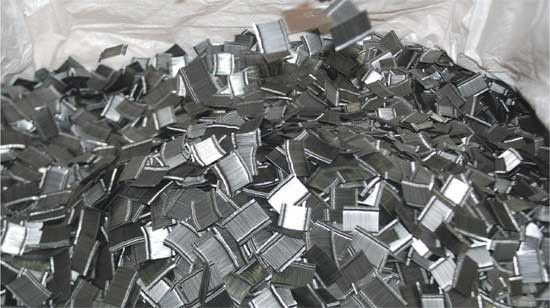
Fibrex™Glued steel Fibers conform to ASTM A 820 & EN 14889-1: 2006 standards are shown in above figure.
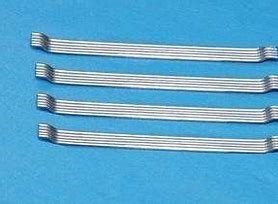
The fibres are glued with water soluble glue which binds them to avoid clumps in fresh concrete and safe against corrosion.
Glued Steel Fibber Functions & Advantages.
Clubbed fibbers provide high tensile strength to bear high load and absorb deformation.
Increase concrete ductility due to its uniform spread in composite.
Flexural strength is high, the toughness makes the composite more durable against erosion, abrasion, and impact.
The bonding area is more and resist deformations
The glued fibers are used in appropriate quantities to enhance the performance of the concrete as they enhance the composite properties such as:
Crack resistance – high tensile stress increases crack resistance
Improved impact resistance.
Improved ductility and durability
In glued SFRC, the performance depends on
Tensile Strength – more tensile steel (from 950 MPa to 1100 MPa) helps in countering forces. Due to high tensile strength they are used in less quantity as compared to non-glued fibers. The structural member dimensions can be reduced for cost effectiveness
Bond strength and Aspect ratio – the hooked ends provide good bonds.

Also, the bigger aspect ratio covers larger area to counter stresses and strengthen the area around aggregates (an area prone to failure under stresses) and strengthen the transition zone actions and reactions.
Mixing – the glued fibers separate during dispersion as compared to non-glued fibers which show tendency to club together.
Spread and Dispersion – Being of non-clumpy nature , these are easy to load in mix drum or system, and the uniformity of dispersion checks stress concentration and make the composite durable by resisting impacts
Workmanship– when used as replacement of rebars, it reduces cost of construction.
These fibers remain in alkaline environment, therefore, checks corrosion, have better crack control and finally increases durability
Applications of SFRC
The glued fiber are of the same use as the non-glued fibbers. But their use in place of nonglue fibbers or rebars is advantageous, less costly, efficient, and effective.
The SFRC can be used in Slabs & Flooring, Precast composites, Shotcrete etcetera, in major works such as construction of Tunnels, Hydraulic structures, Infrastructural development works and other Underground and Over ground Real estate constructions.
Some of the uses are in:
Pavements construction
Tummel linings and associated works – The FRC can be used in tunnel openings, adits and other underground works as well as on tunnel portraits and other ground stabilization works in tune with anchors / rock bolts
Shotcrete –The use of fibers replaces mesh in shotcrete works and simplify the work operation at less cost and at a faster speed.
Airport runways and taxiways,
Bridge deck slab and repairs,
Irrigation channel lining and in rehabilitation works and repair maintenance works associated with roads, bridges and hydraulic structures
SFRC is being used in Ultra High-Performance Concrete and other concretes, not only for checking cracks in the structures but in providing durability and ductility to concrete works
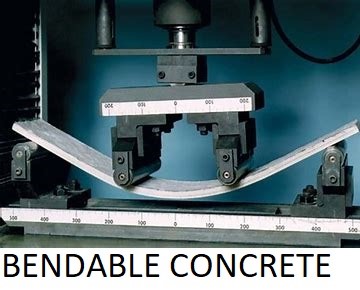
An FRC sub-category named Engineered Cementitious Composite (ECC) claims 500 times more resistance to cracking and 40 percent lighter than traditional concrete. ECC claims it can sustain strain-hardening up to several percent strain, resulting in a material ductility of at least two orders of magnitude higher when compared to normal concrete or standard fiber-reinforced concrete. ECC also claims a unique cracking behavior. When loaded to beyond the elastic range, ECC maintains crack width to below 100 µm, even when deformed to several percent tensile strains. (Source-Wikipedia)
FRC originate about 30 years ago with a limited use of crack control. But now it is widely used in following works and the further use possibilities are under constant research. The scope is unlimited and requires a definite confidence level enhancement and understanding for and by the users. Also, the cost of fibers plays an important role.


